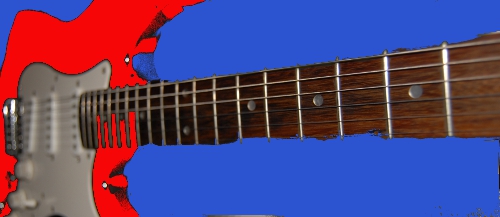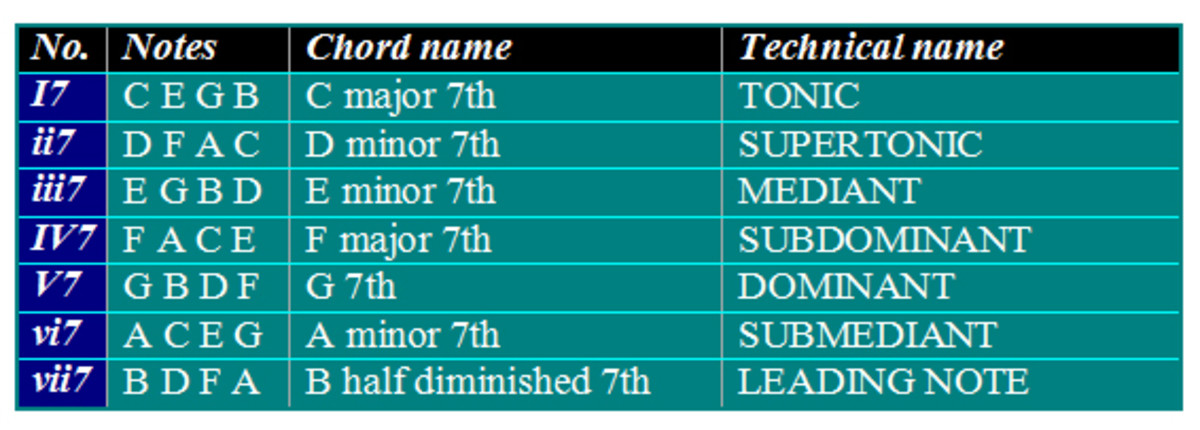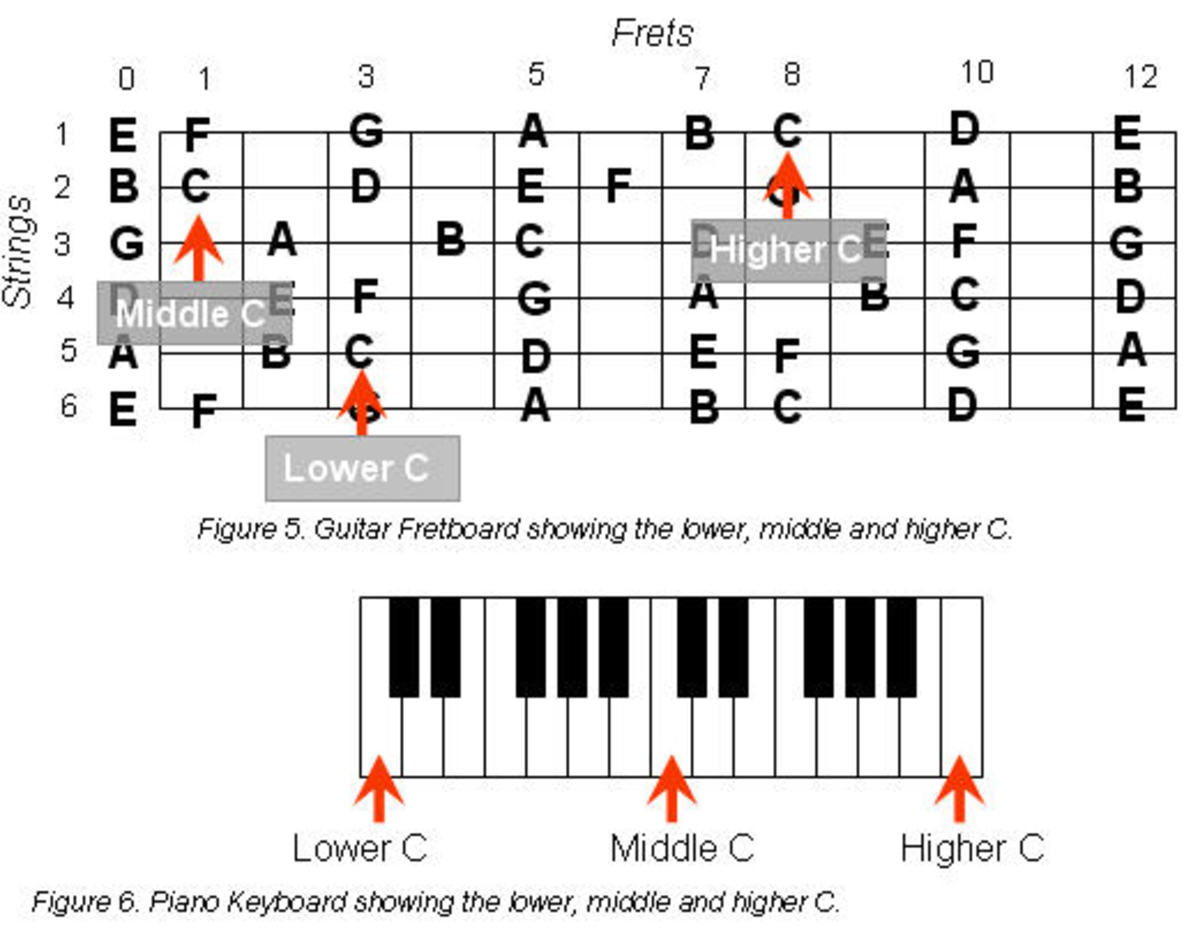The Modal System In Music - When One Scale Is Every Scale
Why You Need To Know The Modal System
Most of the popular music of today, and around 90% of what your average pub band member is called upon to play, relies on just two scales, the major and minor, the Ionian and its relative minor, the Aeolian.
Step outside the confines of 12 bar blues and the three chord trick however, and you're liable to be lost in the swamps of music theory - but not when you know the modal system.
So why do you need to know the modes of the major scale? Let's face it - most popular music is so simple, a guitarist can have a full and successful pop career without ever having to learn to read music or study theory. Which is good in one way, but the fact is the more you know about music, the more varied and richer your choices become. Your music begins to sound more interesting. There's never any harm in knowing more than you strictly need. And apart from that, where's the fun in being an average pub band player? (What, free beer? Every gig? Hmmm.)
Know Your Guitar

The Modes Inside C Major:
There are 7 modes taken from the Ionian (major) scale we all know.
1. Ionian – major scale – 1st degree. The key of C is used here as an example but the modes can be applied to any key. The Step Pattern is just the size of the gap between the notes. 'W' means a whole step, which equals one tone, or two frets on the guitar neck. 'H' means a half step, which equals a semitone, or one fret on the guitar neck.
Step Pattern: W W H W W W H C
Ionian Scale: C - D - E - F - G - A - B - C
Now play the same notes, but starting from the 2nd note of the scale, and you're playing...
2. D Dorian – Flat 3rd, Flat 7th, (natural minor with sharp 6th). Minor 7th chords. Starts on the 2nd degree of any major scale.
Step Pattern: W H W W W H W
D Dorian Scale: D - E - F - G - A - B - C - D
The D Dorian scale. Same notes, different scale. Get it? No longer a major scale, it sounds minor. Do it again, but this time move up to the 3rd note from the C major scale as the starting point ...
3. E Phrygian – Flat 2nd, 3rd, 6th, 7th, (natural minor with flat 2nd). Minor Chords, Starts on the 3rd degree of any major scale
Step Pattern: H W W W H W W
E Phrygian Scale: E - F - G - A - B - C - D - E
And so it goes. Take any major scale, and depending on where you start playing it from and what chords you play it against, it becomes something else entirely. Start from the fourth note, F, in C major, and you have ...
4. F Lydian - Sharp 4th, (major scale with sharp 4th). Major Chords, Major 7ths, Jazz. Starts on the 4th degree of any major scale
Step Pattern: W W W H W W H
F Lydian Scale: F - G - A - B - C - D - E - F
Play the scale starting from the fifth note, G, and you have ...
5. G Mixolydian – Flat 7th, (major scale with Flat 7th). Dominant 7th, major or minor blues, starts on the 5th degree of any major scale.
Step Pattern: W W H W W H W
G Mixolydian Scale: G - A - B - C - D - E - F - G
Start from the sixth note, A, and you have C's relative minor scale ...
6. A Aeolian – Flat 3rd, 6th, 7th, (natural minor scale). Minor Chords. Starts on the 6th degree of any major scale. (Every major scale has a relative minor scale and vice versa.)
Step Pattern: W H W W H W W
A Aeolian Scale: A - B - C - D - E - F - G - A
Finally, start the scale from the seventh note and you have ...
7. B Locrian - Flat 2nd, 3rd, 5th, 6th, 7th (minor scale with flat 2nd, and 5th). Diminished minor seventh/flat five chords, jazz. The weird one. Sounds like toothache. Starts on the 7th degree of any major scale
Step Pattern: H W W H W W W
B Locrian Scale: B - C - D - E - F - G - A - B
Joe Satriani On Guitar Modes
How To Harmonize The Major Scale
And after that, you're back to C major/ Ionian. All those scales, all that musical potential, locked inside one simple major scale. And now you know how to let it out.
You can harmonize the major scale by taking its component notes in order and stacking them with thirds from the scale. To start, take C. CDEFGAB is the scale, and counting from C as 1, the 3rd note is E. Taking E as 1, the next 3rd is G. Put those notes together and you have CEG, a C major chord. C is the root, E is the 3rd, and G the 5th. This is the formula for a major chord.
Starting from D, using the same process you end up with DFA, a D minor chord. D is the root, F is the flattened 3rd, and A is the 5th. This is the formula for a minor chord.
Starting from E, you end up with EGB, E minor.
Starting from F, you get FAC, F major.
Staring from G, you get GBD, G major. (Get to the end of the row CDEFGAB, and you just return to the start.)
Starting from A, you get ACD, or A minor.
Starting from B, you get BDF, or B diminished. B is the root, D the flattened 3rd, and F the flattened 5th. This is the formula for a diminished chord.
And now you have a harmonized scale. Try playing that chord sequence and hear how it sounds. C, Dm, Em, F, G, Am, B dim, and back to C. Which, you will find, are most of the chord choices popular music composers will make when working in the key of C. If you're ever stuck trying to work out a song you've heard, just identify the key it's in and you can probably guess at the chords from its harmonized scale.
It all adds to the choices available to you when it comes to playing your guitar - and that is never a bad thing. Music only gets better when you don't have to reach up to the cliché shelf, and the more you know about music theory, the less likely that is to happen. There's a great lesson on the Ionian scale below, in Andrew Wasson's Creative Guitar Studio YouTube channel, and I recommend his videos on the rest of the modes.
Guitar Lesson: The Major Scale - Ionian Mode
Books On Modes For Guitar









